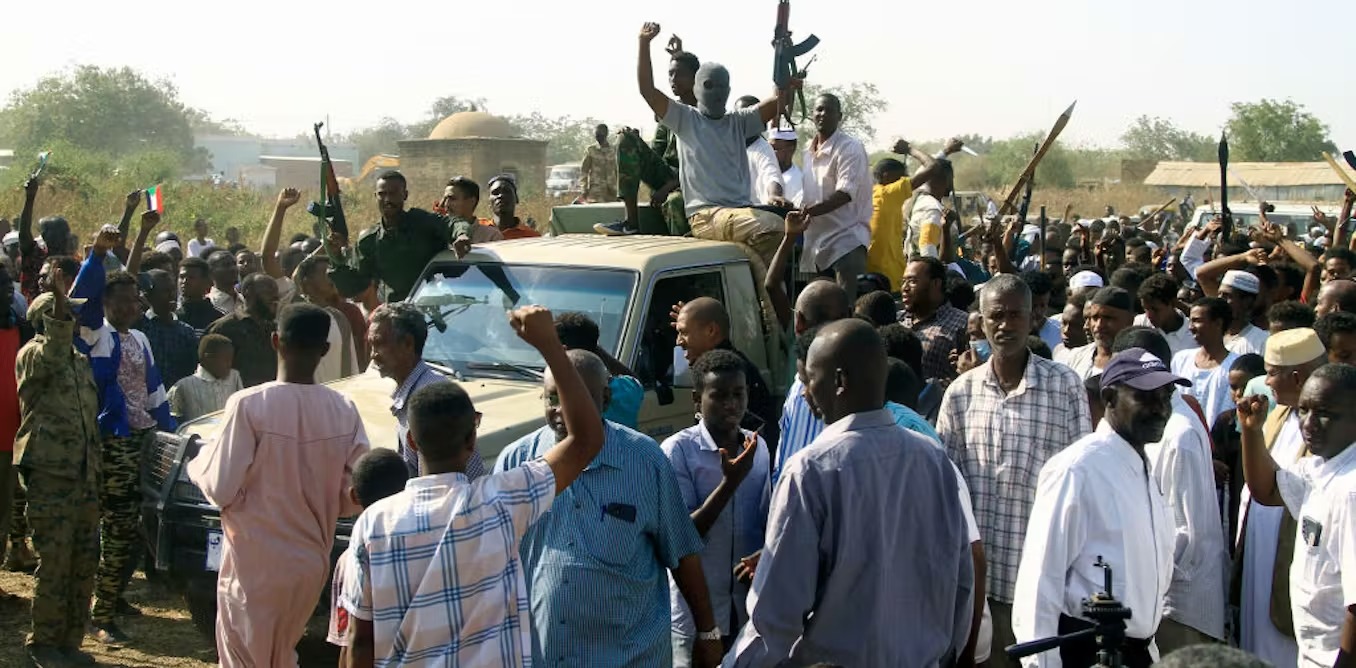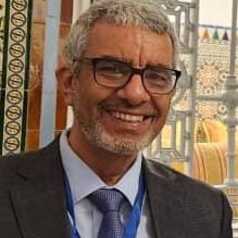The current civil war in Sudan goes beyond a simple power struggle between two generals. It reflects a deep-rooted crisis within the country’s governing structure that’s been present since it gained independence from the British in 1956.
Since independence, the Sudanese have experienced 35 coups and attempted coups, more than any other African country. In the country’s southern region a 56-year rebellion eventually led to the creation of South Sudan in 2011. A Darfurian uprising in 2003 was sparked by accusations that the central government was discriminating against the region’s non-Arab population. It led to ethnic killings and continues to simmer.
Delving into the history of Sudan, which I have done for more than three decades, reveals that the country suffers from a long-standing identity crisis that has fuelled the numerous rebellions.
The inability, or perhaps unwillingness, of successive governments to manage the country’s diversity and articulate a shared vision has resulted in unfair distribution of wealth and resources.
Sudan has a population of 49 million. It comprises 19 major ethnic groups and about 597 ethnic sub-groups speaking hundreds of languages and dialects. Sudanese Arabs make up the largest single ethnic group at about 70% of the population.
Political and economic power and resources are concentrated in the country’s centre (for example, Khartoum).
Achieving peace in Sudan requires a focus on the concerns of marginalised populations in conflict zones and deprived regions. These include Darfur, South Kordofan and the Nuba Mountains. It also requires addressing the root causes of armed violence. Among them are issues of marginalisation, the relationship between religion and state, governance, resource sharing, land, social justice and equality at the national level.
The early years of independence
The Sudanese government that came to power in 1956 insisted on an Arab and Islamic identity. The state was based on the principles of Mahdism, an Islamic Sufi order established in the 1880s. It wasn’t representative of diverse communities and sought to subject them to the will of the Mahdist state. It demanded a degree of compliance that many were unwilling to provide. Resistance against Mahdism was widespread.
In 1989, a new government seized control of the state under the rule of the National Islamic Front. This was an alliance between army officers and the Muslim Brotherhood, a fringe outfit that grew into a powerful political organisation.
This coup brought to power Omar al-Bashir, who was supported by Islamist leader Hassan al-Turabi. Their government also endeavoured to establish an Islamic state.
The government set up an internal security apparatus, which arrested and tortured dissenters. In 1991, the regime introduced a new penal code to impose an Islamisation agenda, and created the “People’s Police”.
Two further developments would create the conditions for the war that continues to rage today.
The first was the al-Bashir regime’s decision in 2003 to enlist Janjaweed militias to quell an insurgency in Darfur. Second, the Islamist regime used this new militia to keep the elite in the Sudanese army away from conflict zones in the periphery.
In 2013, al-Bashir formally designated these tribal militias as the Rapid Support Forces through a presidential decree. This affiliated them with the national security and intelligence services.
In 2017, Sudan’s parliament ratified the Rapid Support Forces Law. This formally incorporated the militias into the government’s military apparatus under the direct command of the president. The minister of defence was tasked with overseeing the Sudanese Armed Forces.
Mohamed Hamdan Dagalo, alias Hemedti, was appointed by al-Bashir to lead the Rapid Support Forces. This enabled his power and influence to grow. It was to inform the dramatic and tragic events in Sudan in the coming decade.
After protests in 2018 swept through Sudan’s major cities – driven by grievances around poverty, corruption and unemployment – the military intervened in April 2019. They removed al-Bashir from power and declared a state of emergency.
Despite establishing a transitional military government, demonstrations persisted demanding civilian leadership.
With mediation from the African Union, an agreement on power-sharing was reached in August 2019. It resulted in a military-civilian transitional administration. Still, challenges persisted, including a failed coup attempt in September 2021. A month later, Sudan’s top general, Abdel Fattah al-Burhan, led another coup, derailing the country’s democratic transition.
The months leading up to the war in April 2023 were marked by civilian protests that were violently repressed, and tensions between army and Rapid Support Forces leaders.
Forging a militia-dominated state
The Rapid Support Forces emerged as a counterbalance to the armed forces. It strategically deployed thousands of battle-hardened fighters to the country’s biggest cities, volatile border regions and economic hubs like gold mines.
Concurrently, Russia forged ties with the Rapid Support Forces through the Wagner Group to secure access to Sudanese gold.
Three conditions coalesced to foster the emergence of a militia-dominated state, with the Rapid Support Forces at its helm.
-
Civil strife in Darfur in 2003 presented an opportune moment. While the army focused on quelling rebellion in south Sudan, the suppression of the Darfurian uprising in the west was left to paramilitary forces.
-
Support from the Sudanese government enabled the self-styled militia to access financial resources and weaponry. It could then develop commercial ventures to attain and sustain autonomy from the state.
-
Ideologically, Hemedti portrayed the Rapid Support Forces as a militia representing marginalised Arabs from Sudan’s rural and border regions.
The unravelling
In Sudan’s evolving democratic transition, Hemedti’s rise to the vice presidency of the Sovereignty Council in 2021 was crucial, overseeing the path to elections. Disbanding the Rapid Support Forces or sidelining Hemedti risked sparking unrest, given the outfit’s size and business interests.
Militia dominance over the state can prompt belated responses from the military, potentially making conflict worse.
Initially, Hemedti refrained from seizing power by force. He aligned his troops as allies of the army, which also had substantial economic ventures.
But the October 2021 military coup halted Sudan’s democratic progress. Amid repression and economic decline, the Rapid Support Forces expanded its influence through business ventures and engagements. The army’s attempt to integrate these forces backfired, leading to armed confrontations and the Rapid Support Forces’ seizure of critical areas.
What next
Sudan requires a collaborative effort from the international community to aid reconstruction. It needs to establish a transparent, civilian-led government that represents the Sudanese populace and hears their voices in decision-making processes. Urgent action is needed to reconstruct Sudan’s post-colonial state as one that includes and safeguards the rights of all.



 Idaho Board’s Explosive Move Shakes Higher Ed With Controversial DEI Ban Approval Sparking Nationwide Debate
Idaho Board’s Explosive Move Shakes Higher Ed With Controversial DEI Ban Approval Sparking Nationwide Debate  Trump's Pre-Inauguration Rally Sparks Frenzy with Massive DC Event at Capital One Arena
Trump's Pre-Inauguration Rally Sparks Frenzy with Massive DC Event at Capital One Arena  Biden’s Shocking Work-From-Home Deal Stirs National Debate Over Federal Jobs and Remote Work Policy
Biden’s Shocking Work-From-Home Deal Stirs National Debate Over Federal Jobs and Remote Work Policy  Crude Oil Resilience: Navigating Geopolitical Tensions and Market Dynamics
Crude Oil Resilience: Navigating Geopolitical Tensions and Market Dynamics  What are Donald Trump’s plans for ending international conflicts in 2025?
What are Donald Trump’s plans for ending international conflicts in 2025?  Vegas Blast Claims Life, Injures Seven in Shocking New Year Tragedy
Vegas Blast Claims Life, Injures Seven in Shocking New Year Tragedy  Robert F. Kennedy Jr.’s Path to HHS Sparks Fierce Debate over Health and Leadership in America
Robert F. Kennedy Jr.’s Path to HHS Sparks Fierce Debate over Health and Leadership in America  From Cleopatra to Wellington, leaders have always taxed beer. But Australia’s system has made beer extra pricey
From Cleopatra to Wellington, leaders have always taxed beer. But Australia’s system has made beer extra pricey  Holiday Pause: Gold Prices Remain Steady Amid Economic Shifts
Holiday Pause: Gold Prices Remain Steady Amid Economic Shifts  Sport produces mountains of high-tech waste. We are finding new ways to recycle it
Sport produces mountains of high-tech waste. We are finding new ways to recycle it  White House Tensions Explode as Biden and Harris Reportedly Drift Further Apart After Election Setback
White House Tensions Explode as Biden and Harris Reportedly Drift Further Apart After Election Setback  Trump’s Unexpected Move Shocks Washington as He Confirms Attendance at President Carter’s Funeral Amid Controversy
Trump’s Unexpected Move Shocks Washington as He Confirms Attendance at President Carter’s Funeral Amid Controversy  Department of Justice Faces Scrutiny Over $100 Million Spent on Controversial DEI Programs in Four Years
Department of Justice Faces Scrutiny Over $100 Million Spent on Controversial DEI Programs in Four Years  Hallucinogens approved for treating psychiatric disorders: what does the science say?
Hallucinogens approved for treating psychiatric disorders: what does the science say? 































